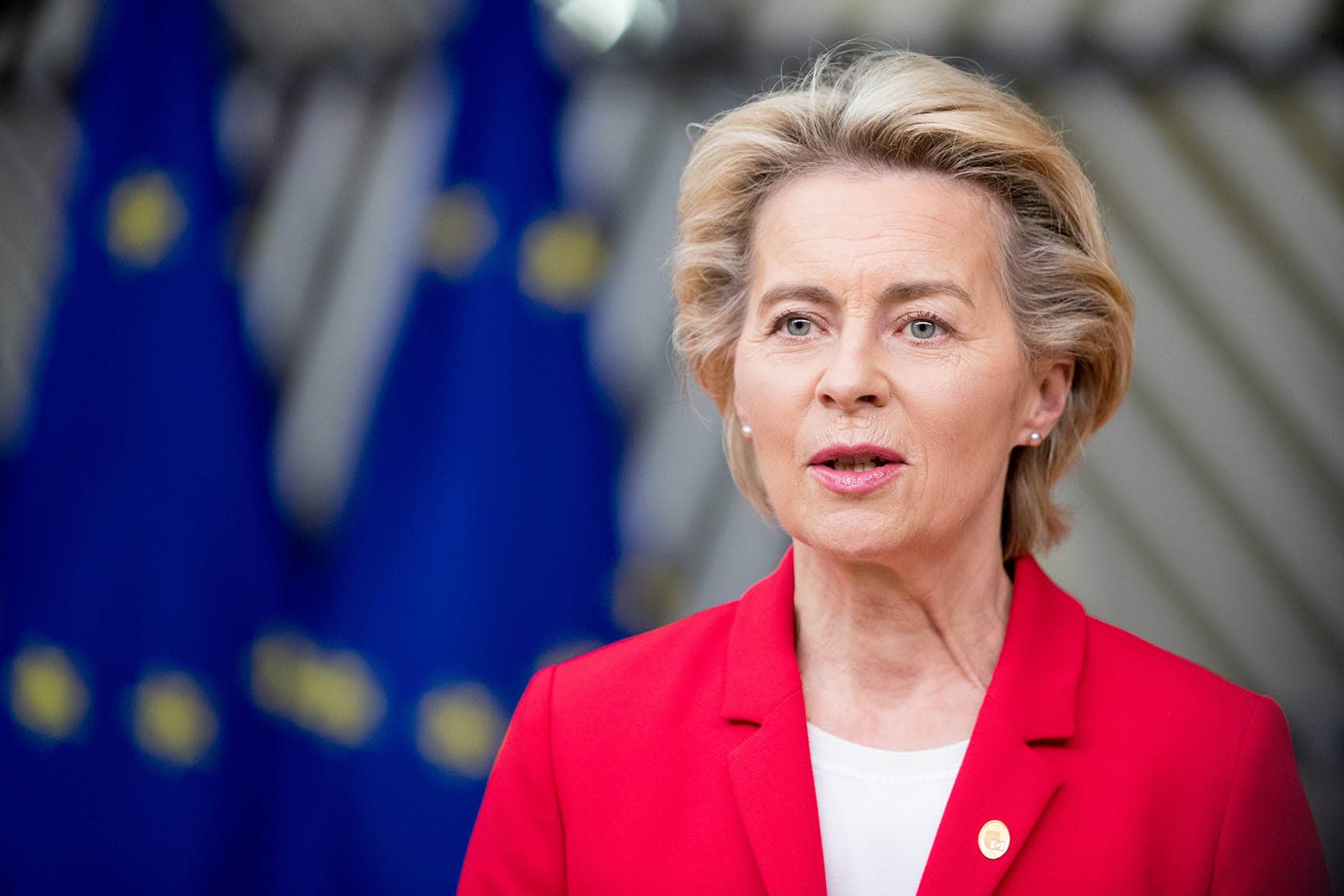
Above: Ursula von der Leyen. Photographer: Etienne Ansotte, Image © European Union, 2020. Source: EC - Audiovisual Services.
Pound Sterling's sell-off against the Euro is easing with focus returning to EU tariffs.
Pound Sterling rises as it tries to snap a run of six consecutive daily losses against the Euro, with focus turning to EU-U.S. trade war risks.
The Pound-to-Euro exchange rate (GBP/EUR) recovery to 1.1892 (+0.25%) comes as the EU and U.S. officially entered a trade war on March 12 after the European Commission announced it was to retaliate against U.S. tariffs, announcing tariffs worth $28BN on U.S. goods.
The EU said it is a countermeasure for the €26BN tariff on EU imports announced by the U.S. last month.
The rump of the EU's package is nothing new: Tariffs imposed under Trump's first presidency were suspended during the Biden administration. The EU will let that suspension lapse in April.
However, an additional package of new countermeasures on U.S. exports will come into force by mid-April, following consultation with Member States and stakeholders.
The developments serve as a reminder that the EU still faces risks with the U.S. set to announce its biggest tariff package yet on April, something that will keep markets nervous and potentially limit the Euro's recent impressive rebound.
"While downside risks for the EUR and euro-zone economy have diminished, they have not completely gone away," says Lee Hardman, currency analyst at MUFG Bank Ltd.
"Tariffs are a massive near-term risk," says Bill Diviney, an economist at ABN AMRO.
"We expect the EUR-USD exchange rate to fall back somewhat in the coming weeks," says Ulrich Leuchtmannm, Head of FX and Commodity Research at Commerzbank.
The market impact has been relatively muted in response, with the EU signalling it is ready to negotiate, which Donald Trump tends to respond positively to.
"We will always remain open to negotiation. We firmly believe that in a world fraught with geopolitical and economic uncertainties, it is not in our common interest to burden our economies with tariffs," said EU Commission President Ursula von der Leyen.
The GBP/EUR recovery comes after a six-day selloff that left the exchange rate oversold, with the Relative Strength Index (RSI) on the daily chart falling to 30 (see the lower panel in the chart), triggering an oversold signal.
Above: GBP/EUR at daily intervals.
GBP/EUR is also close to a clear graphical support zone at 1.1820, where the January selloff also faded and ultimately reversed. The level also came into play in June and September 2024 and forms the bottom of a medium-term range.
Given the technical challenges to further gains by the Euro, a consolidation becomes likely.
For now, the prospect of a rebound is less assured than in January, when a similar selloff was driven by the unwinding of 'long' GBP positioning.
The European economic outlook has been significantly reappraised as Germany prepares to spend more on defence and infrastructure investments. Economists say this is a game-changer moment for the single currency.
"Germany is setting in motion a significant shift in modern history, potentially transforming it from a fiscal detractor to a fiscal stimulator. Markets should take note!" says Vasileios Gkionakis, Senior Economist and Strategist at Aviva Investors.
The fundamental shift in favour of the Euro we have seen in the past week leaves us wary of a breakdown of GBP/EUR support at 1.1820 in the event of further Euro outperformance.
"GBP/EUR is already down 2.2% this month and has broken below its 50-week moving average support level for the first time in a year, which could open the door to an extended slide towards €1.17," says George Vessey, Lead FX and Macro Strategist at Convera.

